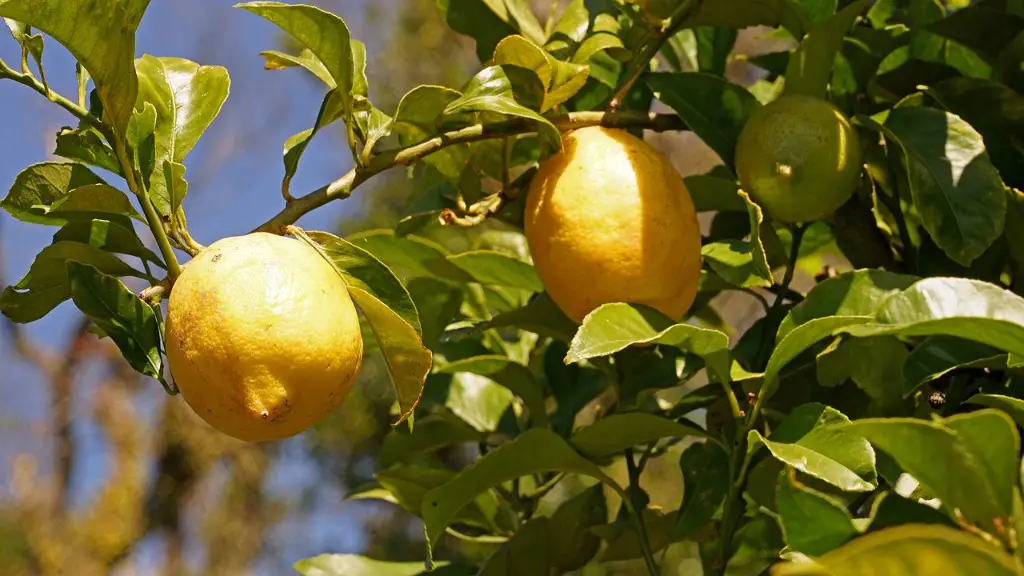Selecting a Healthy Live Avocado Tree
Avocado trees (Persea americana) are an attractive and highly-desired variety of fruit tree that are often seen in tropical, temperate and even Mediterranean climates. It’s important to first select a healthy tree from which you can expect fruit to set and ripen. Live, healthy avocado trees can be purchased or borne from a nursery. The grafting of branches also helps to create dwarfed and more compact trees, as well as providing more varieties. The rootstock should be vigorous, healthy and well developed with new branches.
Planting the Tree
It’s important to pick an ideal location for planting the tree. Avocado trees thrive in soil with good drainage, rich in organic matter. Often, a combination of sand, compost, and soil are appropriate for the tree’s health and growth. Compost piles made of leaves, grass clippings, vegetable peels, kitchen waste, wood chips and other organic matter are also beneficial and necessary.
Once you’ve identified the right spot, it’s important to dig a wide and deep hole. The hole should be deep enough to cover the root ball of your tree and wide enough to accommodate the majority of the root mass. Any tangled and knotted area should be trimmed and the root ball should be cut back from the stalk.
Mix seaweed extract, a fertilizer low in nitrogen, or some manure into the soil around the tree. Water the soil around the tree generously at first and continuingly until the root ball is soaked. This will ensure that the branch tips don’t dry out. If some tips are dry and brown, cover them in the wet soil. Cover the soil with mulch to keep it moist.
Renovating the Avocado Tree
Renovation of the tree’s interior canopy is important in order to promote better bearing. A tree that has not been renovated may have lots of branches in the interior and a lack of fruiting ones, leading to few fruits. Renovating includes removing deadwood and crossing or shaded limb and leaves.
To prune the avocado tree, it must be heavily watered for several days before the pruning begins. This will help to reduce shock. With a set of pruning shears or a pruning saw, begin at the center of the tree, pruning out any deadwood or limbs that don’t have a live root connection. Then move outward, removing any limbs that are crisscrossed, spaced too closely or growing inward.
Along the outermost branches, measure the largest branch and compare that to the branch diameter below – it should be two-thirds the size of the next branch. Refresh the canopy of the tree by removing competing branches and shortening the branches to the desired “U” shape.
Feeding the Avocado Tree
Fertilization is essential for a healthy and productive avocado tree. Remember to fertilize the tree based on the ratio of available nitrogen, phosphorous and potassium in the soil. A soil test should be conducted in order to determine the nutrient requirements for the particular tree. A balanced fertilizer with all three primary nutrients, either organic or inorganic, can then be used to meet the tree’s needs.
Organic fertilizers, such as compost and manure, are also beneficial for tree health as they help to add beneficial microbes, fungi and other organisms to the soil. In addition, the compost and manure provide the additional nutrients of calcium, magnesium and trace elements.
Pollination
Avocados are self-pollinating, so no outside help is required for it to bear fruit. Still, ensuring that it receives sufficient pollinators helps to ensure the best quality in terms of shapes and flavors. These can include bees, wasps, flies and moths, so it’s important to keep these pollinators in mind when planting the tree. Avoiding the use of pesticides also helps to keep beneficial pollinators in the vicinity.
Time Frame to Bear Fruit
Avocado trees are generally known to bear fruit in anywhere from four to eight years. However, this can vary greatly depending on factors such as the health of the tree, the location and availability of pollinators, and soil composition. Trees that are well cared for and planted in ideal conditions are more likely to produce fruit sooner and with less effort.
Dormancy of the Bark and Leaves
Avocado trees have a tendency to go dormant for most of the year. With temperatures below 50 degrees, the tree may have a slow growth period, which can last for several weeks. The bark and leaves will become brown and brittle, but this is normal and not an indication of poor health. As conditions warm up and the tree emerges from dormancy, growth will resume.
Hot Weather Stress
Avocado trees can suffer from hot weather stress if temperatures remain between 75 and 100 degrees Fahrenheit. Avocado trees need to be watered deeply and regularly during this stressful period in order to ensure enough moisture and nutrients reach the fruit, preventing any fruit drop. Also, shade can be provided during the hottest hours to help alleviate the stress of the heat.
Protecting the Tree from Pests and Disease
Pests can be detrimental to avocado tree health. Among the most common pests are mealybugs, aphids, mites and scale worms. Additionally, diseases such as root rot, canker, verticillium wilt and avocado sunblotch can be detrimental to the tree’s health, so it’s important to take steps to prevent pests and diseases from taking hold.
In order to protect the tree from pests and diseases, it’s important to practice good sanitation and to regularly keep an eye out for signs of damage. Also, appropriate control measures must be taken if any pests or diseases are spotted on the tree. This can include physical removal, pruning, the use of pesticides and fungicides, or the use of natural predators.
Providing the Necessary Growing Conditions
Avocado trees require plenty of sun, as they need at least 8 hours of full sun a day. However, they can also tolerate light shade, as long as they still receive plenty of sunlight.
For the best fruit production, avocado trees also require a consistent and well-distributed supply of water. They need approximately an inch of water every week, preferably through irrigation or deep soakings every 5-7 days. Also, as avocado trees are sensitive to drought, it’s important to maintain well-draining soil and provide water during especially hot and dry spells.
Frost Protection
An ideal location for planting avocado trees would provide minimal frost damage. However, if frost damage still occurs, then it’s important to take steps to protect the tree. This can include providing a protective flow of warm air, insulation, cloches and even direct heating. Also, pruning your tree and providing a “U” shape canopy helps to reduce the occurrence of frost damage.
Insecticides, Fungicides & Herbicides
The use of insecticides, fungicides and herbicides can help prevent damage caused by pests and diseases that can be detrimental to avocado trees. Insecticides and fungicides can help to combat the infestation of pests and diseases, while herbicides can help to reduce the growth of weeds.
However, it’s important to maintain an appropriate balance between the use of these products and the application of organic methods, such as beneficial insects, organic fertilizers and organic pest control. In this way, you can ensure a healthy, pest- and disease-free tree that can bear fruit without causing undue damage to the environment.


